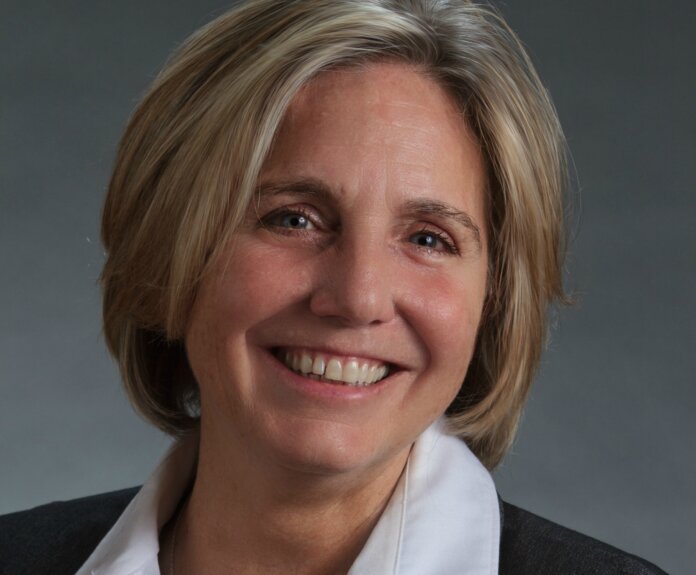PERSON OF THE WEEK: Brenda Jarvis is vice president of national retail lending for MiMutual Mortgage, a privately held retail and wholesale non-depository mortgage lender headquartered in Port Huron, Mich. The company, which is the national retail channel for Michigan Mutual Inc., is licensed in 30-plus states and is growing rapidly, with new retail locations in Utah and Minnesota. MortgageOrb recently interviewed Jarvis to learn more about how branch development differs compared with 10 years ago and what challenges retail lenders face today.
Q: How does branch development differ now than it did before 2007?
Jarvis: Before 2007, branches and individuals were more mobile. People could leave and join another company, with minimal barriers or restrictions. However, with the development of the Nationwide Mortgage Licensing System, as well as other state and federal regulations, moving to another company can be very disruptive for a business and morale.
Typically, branch development consists of two areas: acquisition and recruitment, as well as same-store sales and development. These days, companies dedicate more time and energy on developing same-store sales by working with branch managers to grow their existing businesses, recruit great talent locally and work with their existing staff to make them more productive and successful.
This was not the case in the past, as growing through new branch acquisition and recruitment was the growth method of choice. The cost and time to recruit, transition and train new employees and branches are very high. With that in mind, it makes sense to keep existing staff members happy and energized so they can be successful and remain with the company.
Gone are the days of pushing a company’s agenda on branches simply because that tactic worked in the past. It no longer works, as the people who are still in the industry have been successful, and they have experience that a company can benefit from if management is willing to listen.
Q: What are some of the reasons owner-operators leave their businesses and join retail operations?
Jarvis: Frankly, fear and exhaustion. Regulations have become more restrictive, and there is increased uncertainty of enforcement actions and penalties. We see many owner-operators choosing to work under the umbrella of a midsize mortgage banker as a better alternative. As the mounting pressure and paperwork grow, they literally consume owners and leave little time to recruit, consider additional loan products or simply manage their businesses.
Many owners I have spoken with say they spend at least 80% of their time and resources ensuring their business units are compliant versus productive. Without the economy of scale to help delegate risk-related decisions, they are often forced to be ultra conservative and uncompetitive when it comes to product offerings, training and recruiting.
Another alluring factor for owner-operators in joining a retail branch is the ability to retain the autonomy that has allowed them to flourish, while also relinquishing the personal liability of ownership. It is truly liberating. They find that coming to work is fun again, and they can connect with the people they are helping purchase homes.
Q: What are the top three challenges branches are facing today? How can they best be overcome?
Jarvis: First are the operational issues. Too many companies allow sales and operations to operate in silos, which creates a host of unintended consequences ranging from inconsistent and unreliable service levels, to infighting and poor service that erodes the culture and very purpose of the company’s existence. A lack of transparency, consistency, communication and accountability in operations and sales leads to a real erosion of confidence in salespeople. And a lack of confidence in salespeople leads to the yo-yo sales effect of originating one month and babysitting closings the next, which, in turn, leads to great frustration and meager results.
Companies must have an intentional focus on fostering a symbiosis between sales and operations. It starts at the top. Management must have a plan to get everyone on the same page to achieve this within the company’s culture and organizational structure.
Proper sales and organizational training is imperative to the personal and professional success of a branch and its employees. However, the focus of the industry tends to be limited mainly on the loan origination system, the loan lifecycle process or continuing education. More robust training – including professional sales and leadership training, as well as service-level training – is a real need in our business that is sorely lacking. When companies invest in developing better sales leaders and managers, employees see that a company is making a commitment in its future. This approach demonstrates more of a business partnership and gives employees confidence, as well as creates loyalty and a sense of belonging to the organization.
Product diversity and excessive self-imposed overlays are also a challenge for branches. If a loan product is available through a competitor, branches want the ability to also offer it to their customers. Or, if a product is supposedly offered but the company imposes hyper-restrictive overlays, deals are lost or customers have to jump through hoops that can result in a poor experience. Remaining competitive with products and overlays is a real issue with many smaller companies that do not deliver directly to the agencies.
We believe that if the industry norm is to offer a product, then we offer it, including 203Ka and non-qualified mortgage products, in addition to government and conventional agency offerings. A sales team must be armed with an arsenal that ensures its hard work on the street produces maximum results.
Q: How can the industry create a symbiosis between operations and sales – to work closely together and remove the sales-versus-operations wedge?
Jarvis: In a word, empathy. By having a better understanding of any process or experience, and setting realistic expectations up front, the outcome for everyone is greatly enhanced. When all parties involved in a transaction have a genuine understanding of what happens on the “other side of the fence,” everyone can feel confident and assured that processes are going smoothly. If that is not the case, they can recognize and react, giving a feeling of empowerment and control.
We are rolling out an initiative called Learning Across Boarders that is designed to train individuals on the activities within different departments. This cross training is designed not to teach others to do another’s job, but to elicit understanding and empathy. This empathy training helps bridge the gap between operations and sales that exists in so many companies. Bringing a level of transparency and hands-on experience will help enhance and improve the loan process and, in turn, the experience of the customer.
Q: What are the greatest disconnects between consumer expectations and regulatory requirements?
Jarvis: Consumers want the benefit of protections without the inconveniences of them – particularly in the case of borrowers who have successfully obtained mortgages in the past. For the most part, consumers do not understand that the regulations behind the procedures are there to protect them. Many industry professionals feel the regulations are too arduous and make it difficult to provide a great customer experience. However, it is hard to argue that borrowers today are not better informed and have more protection against predatory practices. The TILA-RESPA Integrated Disclosures rule is a prime example. This regulation holds individual loan officers responsible, as well as their companies, for their origination practices. Consumers may not feel this as they work through the loan process, but the reality is they are in a better position. We can and should do a better job of explaining to consumers how the benefits of the new regulations are in place to help in the process.
Q: What one thing can mortgage companies focus on to optimize the employee experience, loan process and customer satisfaction?
Jarvis: Communicate. We have heard it said a million times – and I am not sure I can say it any differently from others – but that does not make it any less important or neglected. More specifically, proactive communication is important. This means providing our colleagues, as well as consumers, with as much information as possible regarding the status of the origination process. This will reduce the time people are spending reacting to requests from other departments or the consumer. It will truly enhance the customer experience.













